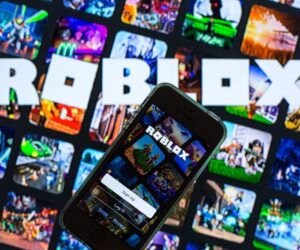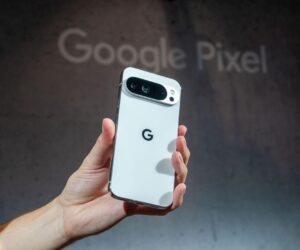A new kind of intelligence is helping patients challenge the doctor’s long-held monopoly on medical expertise.
getty
For 5,000 years, doctors have stood as the sole source of medical expertise, with patients reliant on their judgment to make sense of their symptoms and medical options.
Now, a new kind of intelligence is helping patients challenge that monopoly. The rapid rise of large language models like ChatGPT, Claude and Gemini offers patients the opportunity to climb the ladder of medical expertise. Such a shakeup wouldn’t eliminate the need for doctors, but it would redefine the clinician’s role dramatically.
Putting GenAI To The Test
Back in 2024, only 1 in 6 U.S. adults said they were regularly using AI chatbots for health information. The pace of adoption since then has been striking.
Earlier this month, I conducted a poll that found 78% of patients and 65% of medical professionals have recently turned to genAI for answers to health-related questions. A separate poll from April 2025 found that 88% of all users rated AI-provided medical answers as “good” or “excellent.”
But the data don’t just confirm user satisfaction. Head-to-head comparisons show genAI’s growing diagnostic edge.
A recent Stanford study found that GPT-4 achieved a median diagnostic score of 92% on clinical vignettes compared to 74% for physicians, even outperforming doctors who had AI assistance. Similarly, in a Mayo Clinic pilot, Google’s Med-PaLM 2 produced answers that specialists consistently rated as safe and, in many cases, superior to physician-written responses.
The next opportunity for genAI is shifting from research into practice, with patients using large language models to help manage aspects of care once reserved for physicians. Unlike “Dr. Google,” which buried users in dozens of links of questionable validity, genAI delivers true expertise: it synthesizes medical evidence and provides personalized, clear guidance to individuals in their preferred language.
Patients Beginning To Climb The Ladder Of Expertise
Educators describe the journey to expertise as a five-step climb. For most of medical history, doctors scaled that ladder alone while patients remained at the bottom. With generative AI, patients can climb, as well. Here’s how:
Rung 1: Awareness
Awareness for patients means recognizing that generative AI can provide medical information. In the past, patients struggled to diagnose symptoms or treat medical problems without a doctor’s help. Today, as people use large language models for everyday tasks, they’ve become aware that these same tools can deliver clear, evidence-based medical answers (expertise) tailored to their own healthcare concerns.
Rung 2: Application
Application means putting knowledge into practice. Instead of waiting for an office visit, patients enter symptoms into a large language model and receive guidance on likely diagnoses and next steps. For straightforward problems (that can be treated with over-the-counter remedies or conservative treatment), patients can safely resolve them without clinician assistance. For medical concerns that require prescriptions, labs or imaging, patients will need clinician assistance. However, policymakers are beginning to explore whether individuals should be able to order some of these directly with AI guidance.
Rung 3: Analysis
Analysis becomes essential as health problems grow more complex. Traditionally, only doctors had the training to weigh diagnostic alternatives, ask the right questions and decide on the best treatment. Patients could find information on WebMD or PubMed but had little way of knowing if it applied to them. Now, with genAI, patients can input their personal details, ask clarifying follow-up questions, and compare potential treatments. All this brings context and relevance that generic resources never could.
Rung 4: Synthesis
Synthesis is the ability to integrate new knowledge into one’s understanding for added expertise. Doctors do this by blending new, published research with their own clinical experience. In the future, patients will engage in synthesis by combining clinician guidance with generative AI’s expertise. Since the launch of my book “ChatGPT, MD,” I’ve heard from dozens of people who have used AI to accurately diagnose their own medical problems after their doctors were stumped.
Rung 5: Innovation
Innovation in medicine means creating something new: therapies, devices, surgical techniques. Historically, this was the domain of a small number of physicians or experts in adjacent fields. GenAI won’t turn most patients into medical innovators, but it will broaden participation. With these tools, individuals will be able to design patient-friendly apps informed by their own medical experiences.
Medical culture has long been rooted in hierarchy, with physicians seen as the ultimate authority. From that perspective, many doctors will view this patient ascent as risky and unsafe. But whether clinicians support it or not, patients will climb the ladder. Doctors can choose to partner with them or refuse. What they cannot do is stop it.
The following outlines how patients, working with their doctors, can apply generative AI effectively in the near, short and longer term:
Year 1: Building Trust Through Hands-On Testing
The first step, which can begin immediately, will be for doctors and patients alike to build familiarity (and eventually trust) with genAI in medicine. That trust won’t come from reading academic studies or hearing expert testimonies. It will require hands-on experience.
Clinicians should start by entering anonymized patient details into a large language model and comparing the recommendations offered against their own: where do they align, where do they diverge? Patients, in parallel, should do the same with their own medical information, testing how closely AI guidance matches what their providers recommend. When the answers consistently converge, trust in the reliability of the technology will grow for all.
Health policy experts have long urged clinicians to “practice at the top of their license,” meaning they should take on every task their training allows. In the genAI era, that principle will need to be expanded to include patients “practicing at the top of their expertise.” Likely, a minority will feel comfortable at first acting on AI guidance. But as confidence grows, adoption will spread quickly, with hesitant friends and family members joining the early adopters.
Years 2-3: Patients Take The Lead On Routine Care
Once trust in genAI is established by both doctors and patients, physicians would encourage their patients to use these tools to diagnose and treat problems for which there are clear, evidence-based guidelines. These are likely to include areas such as preventive care, common infections (such as upper respiratory or urinary tract) and minor musculoskeletal injuries.
Furthermore, as at-home diagnostics expand, patients will increasingly rely on genAI to interpret results from cancer screenings (colon and cervical), infectious disease swabs (COVID-19, STIs) and other clinical tests. With genAI guidance, they will know when they can manage a problem using over-the-counter medications vs. when they need to contact their doctor to order additional labs, schedule procedures or prescribe medications. Freed from routine cases, physicians will be able to spend more time caring for patients with complex conditions, improving clinical outcomes and helping reduce the burnout that nearly half of clinicians report today.
Years 3-5: Shared Improvements In Chronic, Post-Acute Care
The most transformative clinical advances will come as genAI integrates with wearable devices and home monitoring tools. Here, two areas stand out: chronic disease management and post-acute care.
Chronic diseases like diabetes and hypertension (drivers of nearly half of all heart attacks, strokes and kidney failures) remain poorly controlled nationwide. genAI could change that by analyzing daily data from at-home monitors, alerting patients when control is inadequate and recommending guideline-based medication adjustments months earlier than the current system allows. Earlier detection would dramatically improve outcomes.
Today, most medically fragile and vulnerable patients are discharged from the hospital with little more than computer-generated handouts and, at best, a follow-up call or nurse visit days later. In the future, genAI connected to bedside or wearable monitors will track their status continuously, evaluating health in real time, 24/7.
At the first sign of trouble, the application would trigger a telemedicine consult. A clinician in an advice center would then evaluate the data, speak with the patient or family, and decide whether to adjust treatment, dispatch a nurse or call an ambulance. All of this would happen hours before today’s hospital-at-home models would identify the problem.
Over the next five years, millions of patients will climb high up the expertise ladder thanks to genAI. Together, dedicated clinicians, empowered patients and the expertise that technology afford will lead to superior outcomes, save thousands of lives and build a more sustainable healthcare system for the nation.









